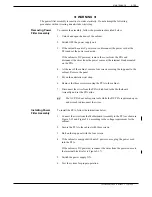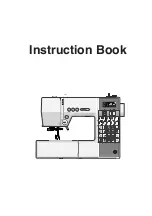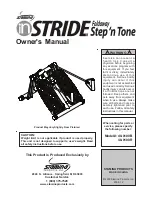
5.10
APPLICATION DELAYS
Application delays are timing values set in the VP 300. Some of these delays are used to detect tone
cadence that the PBX provides the VP 300. The tone cadence indicates a specific call condition. For
example, ringback tone indicates that the called station is ringing, and busy tone indicates that the
called station is busy.
When a PBX type is selected for System Parameter 3 — PBX TYPE/PBX MODEL, the default
values are set to match the tone cadence of the selected PBX. If the PBX type is not in the list
provided by System Parameter 3, the PBX type OTHER should be selected. Because the tone
cadence values in that situation are not known, the VP 300 defaults the values to generic/industry
standard values — as an example, a 1 second ON/3 second OFF ring cadence; 500ms ON/500ms
OFF busy cadence and a 250ms ON/OFF for fast busy. These values may need to be changed to
work properly with the PBX when OTHER is selected.
If the VP 300 already can detect ringback, slow busy, fast busy and, if configured, double
interrupted ringback tones, the application delay indexes do not need to be modified. If the VP 300
detects an answer condition while monitoring single or double interrupted ringback, slow busy, or
fast busy tones, application delay indexes must be modified.
Prior to Release 7.1, application delays were modified by Technical Support. Beginning with
Release 7.1 certain application delays can be modified in UPDATE. The application delay indexes
that can be modified are described in the Application Delay Index section in this chapter.
■
How Tones are Recognized
When the VP 300 screens a call, it is looking for single or double interrupted ringback, slow
busy and fast busy tone. To process the transfer, the VP 300 refers to application delay indexes
49 through 52. These indexes show the maximum and minimum tone ON/OFF periods for any
tone.
If the tone cadence detected does not comply with these delays, the VP 300 determines that the
tone is not single or double interrupted ringback, slow busy, or fast busy, and that the call has
been answered. If this occurs, the system completes the transfer. In a Print Tone (PRT) display
and List Trace display, an answer condition is indicated.
If the tone cadence is within the values set for delays 49 through 52, the VP 300 then compares
the tone cadence with application delay indexes 53 through 76 for single interrupted ringback,
double interrupted ringback, slow busy and fast busy delays, to determine what the condition is.
If it does not comply with any of these delays, it is assumed that the call has been answered and
the VP 300 completes the transfer. Figure 5-20 shows the sequence that the VP 300 follows to
screen calls.
☞
If the PBX provides double interrupted ringback when an internal station calls another
internal station, System Parameter 26 — DOUBLE-INTERRUPTED RINGBACK, is set
to YES. The VP 300 looks for double interrupted ringback versus single interrupted
ringback while calling a station.
Toshiba VP Systems
Release 7.1
July, 1994
MAINTENANCE
5-111
Содержание VP 300
Страница 2: ......
Страница 10: ......
Страница 14: ......
Страница 19: ...Quick Reference Guide Hardware Toshiba VP 300 System Specifications Toshiba VP Systems Release 7 1 July 1994 ...
Страница 20: ...Toshiba VP Systems Release 7 1 July 1994 ...
Страница 52: ...Toshiba VP Systems Release 6 1 February 1993 2 14 Installation and Maintenance Manual ...
Страница 56: ...Toshiba VP Systems Release 7 1 July 1994 ...
Страница 146: ......
Страница 312: ...Toshiba VP Systems Release 7 1 July 1994 ...
Страница 314: ......
Страница 444: ......
Страница 496: ......
Страница 542: ......
Страница 598: ...Toshiba VP Systems Release 6 1 February 1993 ...
Страница 600: ...Toshiba VP Systems Release 6 1 February 1993 ...
















































